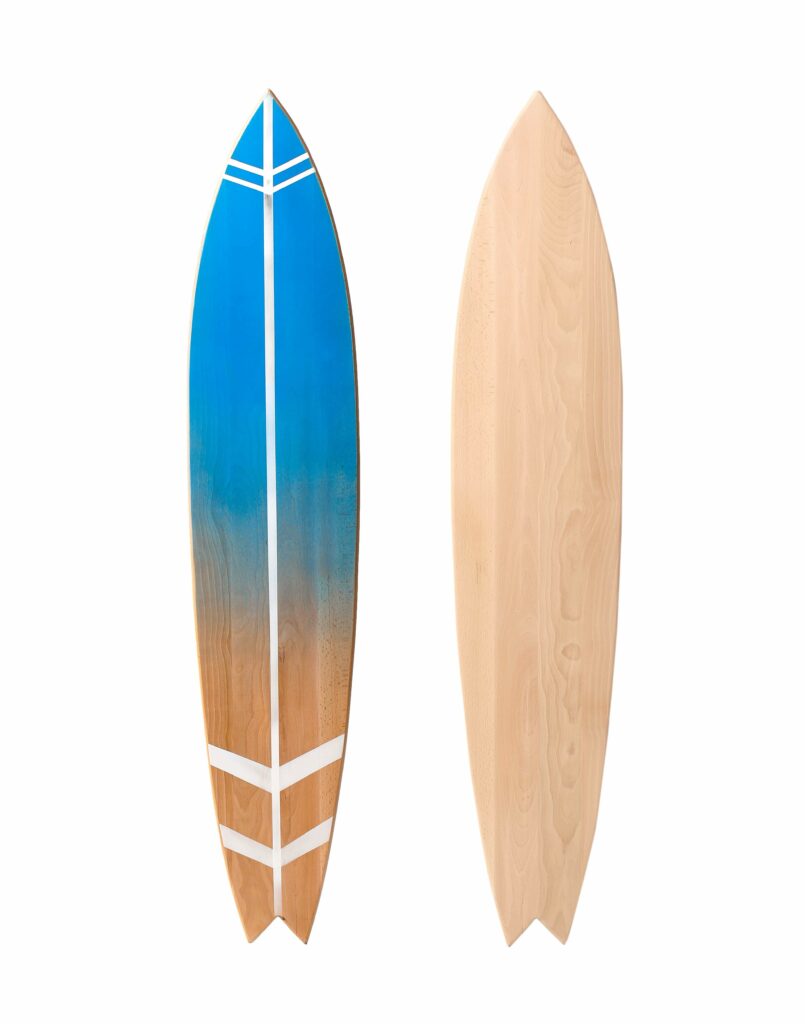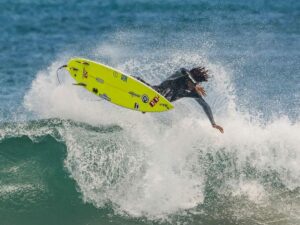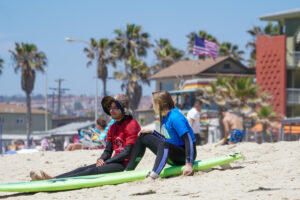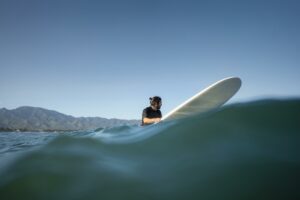Longboard vs. Shortboard - What Are The Differences?
There’s no better thrill than balancing on a board and feeling the ocean spray against your face as you try to catch the perfect wave. Whether it’s for a hobby or sport, surfing is a superb way to connect with nature while challenging yourself and staying fit.
So, if you’ve been thinking about taking up surfing but find yourself wondering about the different types of surfboards, then wonder no longer. This article will explain the differences between a longboard vs. shortboard, which includes the fundamental differences between the two and which is right for you.
Surfboards 101
Surfing has been around for over 800 years, and with it, the surfboard in one form or another. Cave paintings dating back to 12th century Polynesia are the earliest evidence of surfing and clearly illustrate ancient versions of the beloved extreme sport. However, surfing wasn’t a sport but a way of life back then, and creating a surfboard was a personal, spiritual experience.
However, the surfboard has changed over the years to make it more suitable for the modern-day extreme sport. The surfboard was constructed of locally sourced wood during the ancient Hawaiian era. Nowadays, surfboards are made of either polyurethane or polystyrene foam coated in fiberglass cloth, polyester, or epoxy resin.
Then, over time changes to the surfboard included modifications to the rail curve and the underside, which target different surfing abilities. For example, it can either turn faster (better for advanced surfers) with a straight-cut rail or take turns slower (better for beginners) with a softer curved rail.
Different Parts of a Surfboard
Let’s quickly break down the general anatomy of the surfboard:
The Nose
At the front of the board, you have the nose. The nose can be rounded or pointed depending on the type of board.
The Rails
The rails are the edges of the board, and depending on the type of surfboard can be straight-cut or softer.
The Stringer
The stringer runs through the middle section of the board to make the board sturdier. Wood is the usual material used in stringers. However, it’s important to note that epoxy surfboards don’t usually have a stringer.
The Deck
The deck is the top side of the board, the part where you stand on, and it comes in different types. The deck can either be flat, dome, or step.
The Bottom
The bottom is the underside of the board and comes in different types. The bottom can either be concave, convex, or flat.
The Leash Plug
The leash plug is attached to the leg rope connecting the surfboard to the surfer.
The Fins and Fin Plug
The fin plug is where you can connect different types of fins to. Fins help with steering the surfboard and speed control.
The Tail
At the back of the board, you have the tail. The tail can be rounded or squashed depending on the type of board.
Now that you have a better, albeit brief, understanding of the history and general design of the surfboard, let’s get into the vital part of the article, the longboard vs. shortboard surfing styles.
The Longboard
First, let’s discuss the longboard and what makes it different from the shortboard. The longboard was first created during ancient Hawaii and so has existed in one form or another since then.
Longboard Design
As the name suggests, the longboard is longer than the shortboard, typically reaching lengths of eight to 11 feet. Additionally, they’re known to have a more rounded nose. Finally, the longboard usually has a rounded tail which gives it slightly more maneuverability without sacrificing the stability of the longboard.
Longboard Riding
The longboard’s longer length means it usually has increased buoyancy and stability. The increased buoyancy is thanks to its rounded nose, which gives it a higher lift and makes it easier to stand forward on the board. As a result, a longboard is excellent at dropping into large swells and waves despite its larger size.
The Shortboard
Next, let’s discuss the shortboard and how it differs from the longboard. Unlike the longboard, which dates back to ancient Hawaii, the shortboard is a relatively modern creation that is gaining more recognition and interest.
Shortboard Design
As the name implies, the shortboard is shorter than the longboard, typically reaching up to seven feet in length. Additionally, they’re known to have a pointed nose. Finally, the shortboard usually has a squash tail which gives it more volume in the back, adding to its precise maneuverability.
Shortboard Riding
The shortboard’s shorter length means they’re better at tackling more powerful waves with better precision at faster speeds, unlike the longboard, which is harder to maneuver because of its larger form. Depending on the type of wave you’re hoping to catch
Which Is Right for You, the Longboard or Shortboard?
Finally, let’s delve into which surfboard is ideal for you. When it comes to longboard vs. shortboard surfing, the best board for you depends on your current surfing experience and skill. Below is a brief explanation of how the differences between the longboard and shortboard determine which is right for you.
For example, the longboard is ideal for beginners thanks to its high buoyancy and stability. Its larger form means there’s more room to stand atop and get your balance, making it easier to build your surfing confidence as you increase your understanding and skill in surfing. Additionally, a longboard is good during a long surfing lesson because it takes less stamina for inexperienced surfers to paddle out as they attempt to catch a wave.
In contrast, the shortboard is suitable for pros and advanced surfers thanks to its ability to take on more powerful waves with incredible speed and precision. Its smaller form means there’s less room to stand on, making it easier to maneuver. Another reason a shortboard is ideal for pros and advanced surfers is that it’s perfect for advanced surfing maneuvers by experienced surfers, such as airs, cutbacks, and snaps.
Main Takeaways
Now that you’ve finished this article, you understand the differences between the longboard vs. shortboard. Additionally, know which is right for you and why.
So, if you’re ready to hit the waves and need excellent surfing lessons with professionally certified instructors, book a lesson with Pacific Surf today!
We offer private lessons, semi-private lessons, and group lessons. For those that do not have gear, we have westuits and surfboards available for rent. Whether you’re a beginner or already have surfing experience, Pacific Surf School has the perfect class for you.
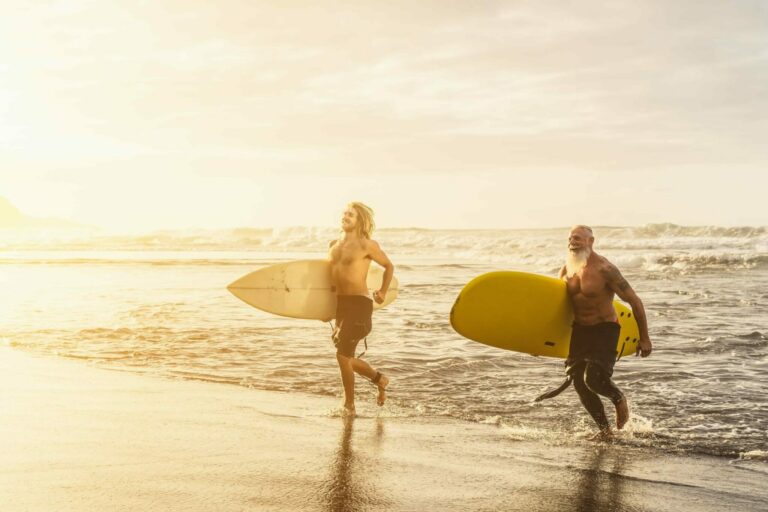
FAQs
Check out these popular FAQs to further enhance your surfing knowledge.
In general, longboards are easier to ride than shortboards. Longboards offer more stability and balance due to their longer length and wider width. This makes them a great option for beginners as they can be used to practice basic skills like carving and cruising before progressing to more advanced tricks with a shorter board.
Shortboard surfing does require more advanced skill and technique than longboarding. It is generally harder to ride a shortboard in terms of balance, control, speed, and maneuverability due to its smaller size. The shorter length and width of the board can make it more challenging to catch waves and stay on them while performing various maneuvers. Additionally, beginners must learn the basics of paddling, positioning, and wave reading in order to be successful.
The answer to this question largely depends on your skill level and riding style. Generally speaking, longboards are often better suited for small waves than shorter boards because of their increased stability and ability to make smooth turns in weaker surf. For beginner-level surfers, a longboard may be the best option as they provide more stability and paddle power.
Yes, a longboard is an excellent choice for beginner surfers. It’s the most popular type of surfboard due to its size and stability. Its length and width make it easier to stay on top of the wave, allowing new surfers to get up on their feet faster and have more fun in the water. The increased surface area also makes it easier to catch small waves and ride them all the way in to shore. Additionally, its buoyancy helps keep beginners afloat, and its shape helps generate speed for faster turns.



